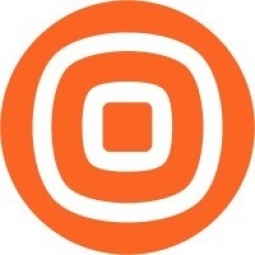Technology Category
- Functional Applications - Enterprise Resource Planning Systems (ERP)
- Networks & Connectivity - 5G
Applicable Industries
- Retail
- Telecommunications
Applicable Functions
- Logistics & Transportation
- Sales & Marketing
Use Cases
- Chatbots
- Time Sensitive Networking
About The Customer
Hrvatski Telekom is the leading telecommunications company in Croatia, providing a full range of telecommunications services – fixed and mobile telephony services, data transmission, TV services, internet and international communications. As the biggest private investor in digitalization, Hrvatski Telekom is the leader in the digitalization of Croatia and was the first to launch a commercial 5G network in Croatia in 2020. The company also provides a wide range of business solutions and services to companies of all sizes, from ICT and Cloud services to POS and customer engagement solutions, as well as Smart City solutions to local Croatian governments.
The Challenge
Hrvatski Telekom, the leading telecommunications company in Croatia, was seeking to upgrade its service offerings for key banking clients and introduce new services to increase value for its larger corporate clients. The company aimed to avoid large capital expenditures associated with launching and marketing new products and was keen to implement a viable solution within a relatively short period of time. A2P SMS messaging seemed like a good way for portfolio expansion, but it required an extensive set of tools, programs, and infrastructure to develop a viable business model around the growing A2P SMS potential.
The Solution
Hrvatski Telekom partnered with Infobip to provide a communications platform and tools that Hrvatski Telekom marketed under their own brand to major enterprises in Croatia. This flexible business model allowed Hrvatski Telekom to keep the contractual relationship with clients, with a joint sales effort between Infobip and Hrvatski Telekom. The partnership initially centered around an automated programmable SMS messaging gateway and expanded as Infobip added new tools and channels to its customer communication solutions portfolio. As new engagement channels emerged, and as they began to be integrated into Infobip’s communications platform, the scope of the partnership with Hrvatski Telekom also expanded. Engagement solutions via Viber and email were the first new channels to be added and deployed with enterprise clients in 2018.
Operational Impact
Quantitative Benefit

Case Study missing?
Start adding your own!
Register with your work email and create a new case study profile for your business.
Related Case Studies.

Case Study
Improving Production Line Efficiency with Ethernet Micro RTU Controller
Moxa was asked to provide a connectivity solution for one of the world's leading cosmetics companies. This multinational corporation, with retail presence in 130 countries, 23 global braches, and over 66,000 employees, sought to improve the efficiency of their production process by migrating from manual monitoring to an automatic productivity monitoring system. The production line was being monitored by ABB Real-TPI, a factory information system that offers data collection and analysis to improve plant efficiency. Due to software limitations, the customer needed an OPC server and a corresponding I/O solution to collect data from additional sensor devices for the Real-TPI system. The goal is to enable the factory information system to more thoroughly collect data from every corner of the production line. This will improve its ability to measure Overall Equipment Effectiveness (OEE) and translate into increased production efficiencies. System Requirements • Instant status updates while still consuming minimal bandwidth to relieve strain on limited factory networks • Interoperable with ABB Real-TPI • Small form factor appropriate for deployment where space is scarce • Remote software management and configuration to simplify operations

Case Study
Digital Retail Security Solutions
Sennco wanted to help its retail customers increase sales and profits by developing an innovative alarm system as opposed to conventional connected alarms that are permanently tethered to display products. These traditional security systems were cumbersome and intrusive to the customer shopping experience. Additionally, they provided no useful data or analytics.

Case Study
How Sirqul’s IoT Platform is Crafting Carrefour’s New In-Store Experiences
Carrefour Taiwan’s goal is to be completely digital by end of 2018. Out-dated manual methods for analysis and assumptions limited Carrefour’s ability to change the customer experience and were void of real-time decision-making capabilities. Rather than relying solely on sales data, assumptions, and disparate systems, Carrefour Taiwan’s CEO led an initiative to find a connected IoT solution that could give the team the ability to make real-time changes and more informed decisions. Prior to implementing, Carrefour struggled to address their conversion rates and did not have the proper insights into the customer decision-making process nor how to make an immediate impact without losing customer confidence.

Case Study
Vodafone Hosted On AWS
Vodafone found that traffic for the applications peak during the four-month period when the international cricket season is at its height in Australia. During the 2011/2012 cricket season, 700,000 consumers downloaded the Cricket Live Australia application. Vodafone needed to be able to meet customer demand, but didn’t want to invest in additional resources that would be underutilized during cricket’s off-season.









